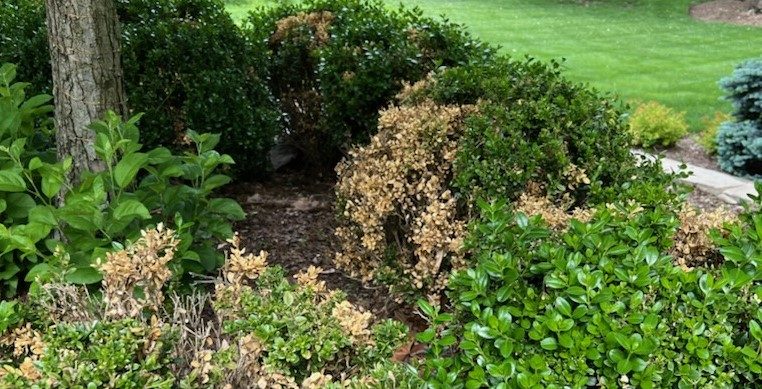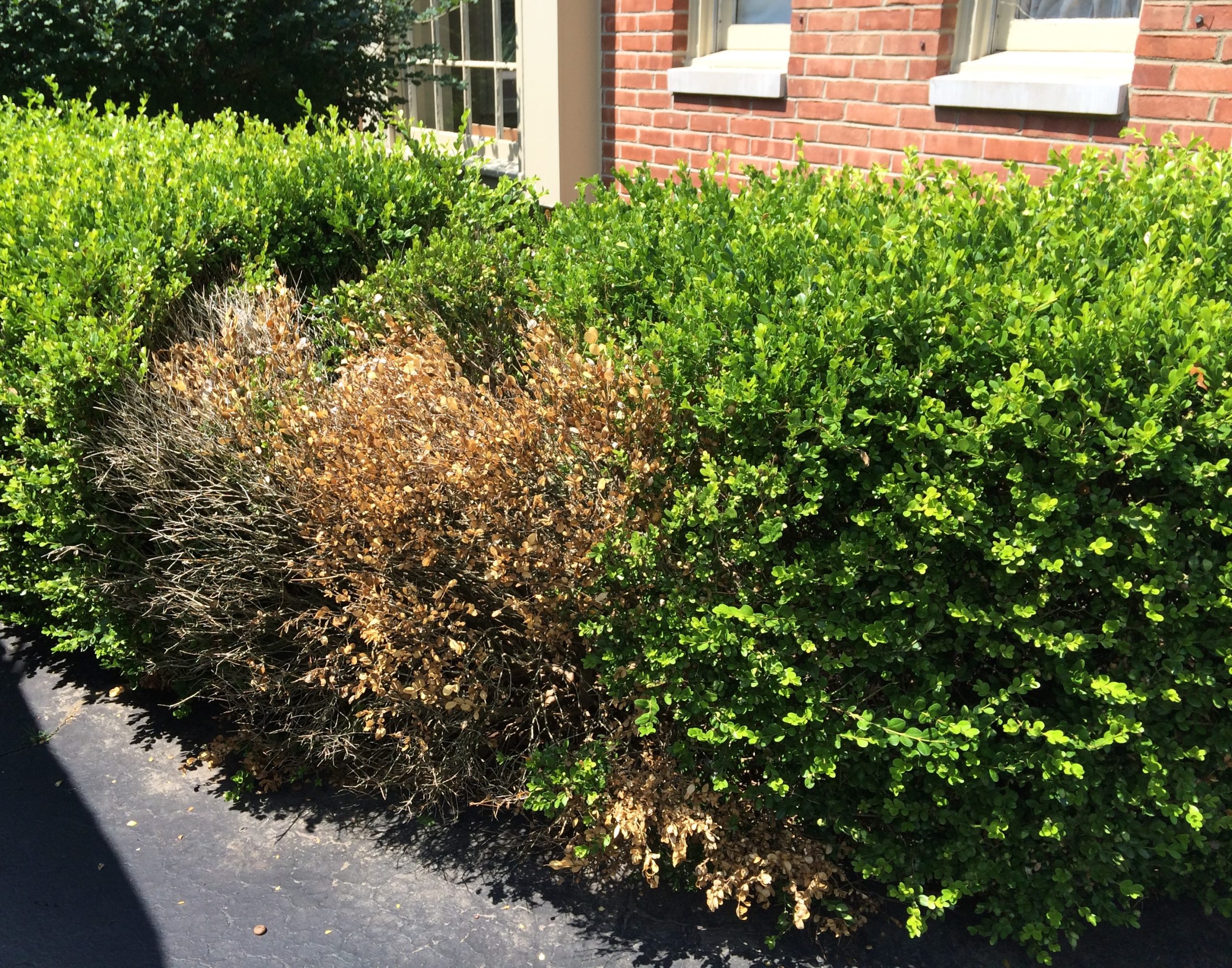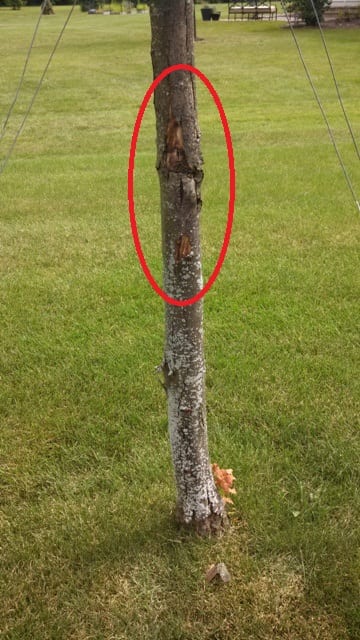What happened to boxwoods in the Midwest last year?! Well, it was complicated…
What a mess for boxwoods this past year. The prior winter and spring were a perfect storm to create what I would call a complex, a mix of environmental damage, fungal disease, and insect infestations. Symptoms are very hit or miss; one landscape looks terrible, and a neighboring property may look fine. Why?! I wish I knew a simple answer, but there just isn’t one; as many of you may know, that has been the hardest part of diagnostics over this past year on boxwoods. Unfortunately, we will continue to see the damaging symptoms of last year throughout this year as boxwoods continue to recover.
I was asked to look at 82 different boxwood emails, text messages, and on-site visits in 2023. The majority (87%) of boxwoods that I saw on site had a mix of winter injury, Volutella leaf and stem blight, and leafminer injury. The remaining boxwood percentage had the addition of psyllid damage and anthracnose. The majority of my recommendations included total plant removal and replacement or shear, prune (clean up the shrubs a best as possible) and spray a combination of chlorothalonil and bifenthrin (depending on time of year) followed by at least 2 rounds of root drenching with Foliar-Pak Grow-In.
There Were Many Factors at Play:
- 2022 Fall Pruning/Shearing/Fertilizer – If boxwoods were pruned or fed too early in the fall/winter season and new foliage had a chance to emerge, it was all damaged from the drying winter winds of late December through February.
- Winter Injury – There was little to no snow cover from December 2022 to March 2023. The snow often protects small shrubs and perennials from the winter winds that reached -15°F in central Ohio in late December 2022. Even some mature dense foliage could not handle the cold temps and high wind combo.
- Disease – With so many leaves and stems damaged during the winter, diseases such as Volutella and anthracnose, quickly infected the damaged tissue.
- Susceptible Cultivars/Varieties – The small leaf boxwood cultivars showed more winter injury than the larger leaf varieties.
- Earlier Than Normal Insect Activity – Boxwood psyllid egg hatch and leafminer adult females were mating and laying eggs almost two weeks earlier than normal, and many bifenthrin sprays missed the window. Even some of the dinotefuran (Safari) and imidacloprid drenches were not taken up quickly enough to kill the first round of nymphs and larvae.
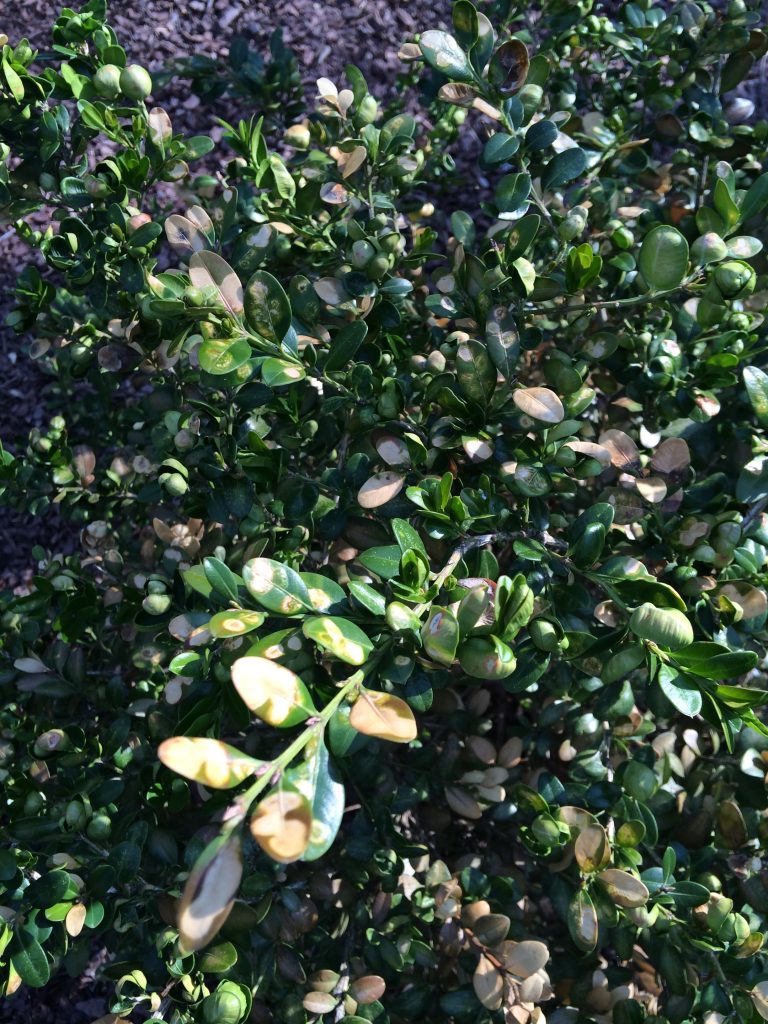
What to Do Now?
Prune, shear, spray, drench, protect! Build the root system and foliage back!
- Pruning/shearing should be done in mid-to-late spring to shape hedges and individual shrubs. Prune out branches with brown and yellow leaves which indicate disease or winter damage. If sheared in late May or early June, you also trim away early-season leafminer larvae and/or psyllid nymph damage.
- Replacement – Be aware that replacing damaged boxwoods with the same cultivar may lead to this exact situation in the future. American/English Boxwoods (Buxus sempervirens) were the most affected in my experience. Tougher cultivars include Korean Boxwood (Buxus sinicia var. insularis) or Littleleaf Boxwood (Buxus microphylla).
- Winter protection can be accomplished by lightly wrapping shrubs in burlap or spraying an antidesiccant such as Aqualock in late December.
- Fertility – Deep root fertilizer feeding or fertilizer drenches can be done in spring and/or late fall. If you drench in the spring you can tank mix with your systemic insecticides. Stimulating new root growth will be key to boxwood recovery. I recommend drenching/deep root feeding with Foliar-Pak Grow-In, Colonise LTO, Bio 12-6-6 or a combination of these products depending on the severity of damage. Granular fertilizer can be used but will have a much slower effect on generating new top growth and roots.
- Treat and protect from insects and disease. Insect drenching should be done in the spring followed by bifenthrin and fungicide sprays through June. If boxwood blight or box tree moth is in the area then continue the fungicide and insecticide spray program through September/October (depending on your climate). Please see our ATS Ornamental Disease Guide and Ornamental Insecticide Guide for more details on products to use.
List of Boxwood Issues to Watch For
Winter Injury – Since boxwoods are a broadleaf evergreen, their leaves are not only injured by cold temperatures, but also dry winter winds. This is very common in the Midwest and may cause a bronzing leaf color which should return to green by mid spring. If not, prune it out.
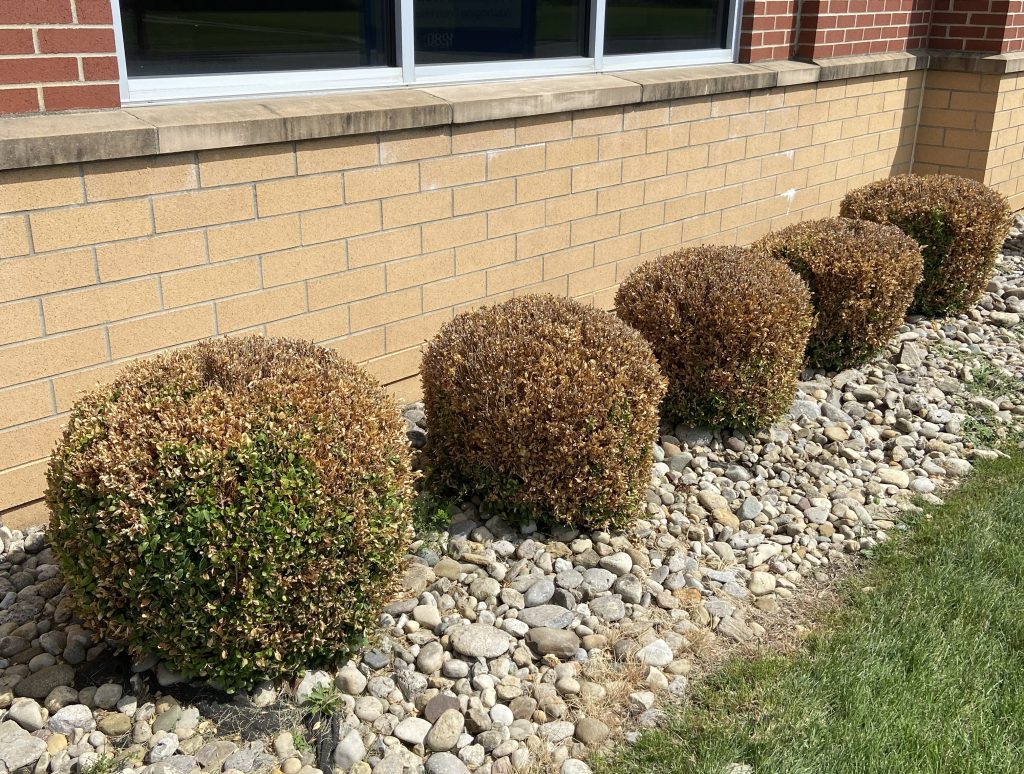
Insect Issues
*Keep an eye on Growing Degree Days for your area to help with preventative treatment timing.*
Boxwood Leafminer – Very common damage caused by larva inside the leaves, soil drench with imidicloprid in early to mid-April or dinotefuran by early May.
Boxwood Psyllid – Nymphs feed in early May, causing new foliage to cup upwards, damage can be pruned/sheared away in late May/ early June followed by a bifenthrin or horticultural oil spray to reduce adult populations.
Box Tree Moth – Moving up from the South, defoliates in one season, contact your state’s Department of Agriculture ASAP!
Boxwood Mites – Most damage happens in the spring but is most notable in late summer/early fall. Mites feed on upper and lower leaf surface, damage is typically minimal, use horticultural oil in early May or as needed.
Nematodes – Typically in issue in warmer (southern) soils, stunted top growth, branch dieback, clubbed roots.
Disease Issues
*Most disease issues can be prevented by spraying recommended fungicides at regular intervals during spring and early summer. Once disease has infected boxwoods shearing, branch pruning, and improved air circulation are top priority.*
Volutella Leaf and Stem Blight – Common fungal disease, bronze/yellow foliage with branch dieback and loose bark, typically from the inside-out infection. Spores on the underside of leaves may be orange or pink in wet conditions.
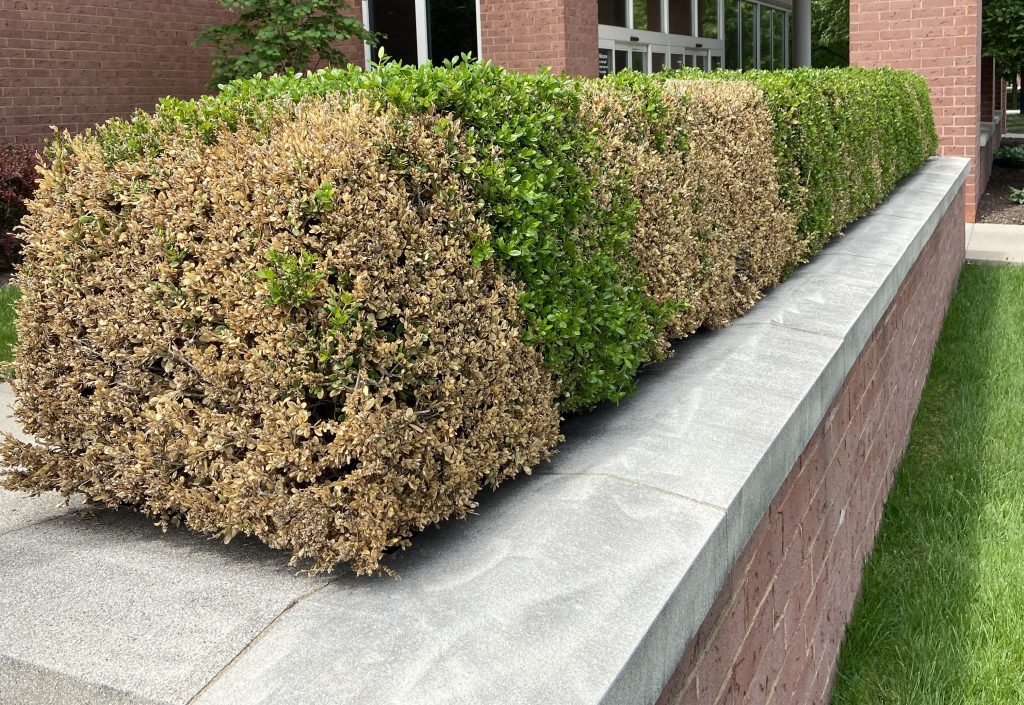
Macrophoma – Minor leaf spot disease, yellow/pale leaves with small black spotting.
Boxwood Blight – Brown leaf botches typically starting at the bottom and moves upward on branches, black streaking on stems, white spores on underside of leaves, defoliates plants in once season. Removal of infected plants is the only treatment. Replace with resistant cultivars and use a proactive fungicide spray program in the spring and summer.
Boxwood Dieback – A disease complex of Volutella blight and anthracnose, random twig/branch dieback with bronzed or yellow leaves.
Boxwood Decline – This is considered a complex of multiple disease and environmental factors combined with root stress from nematodes and phytophthora.








